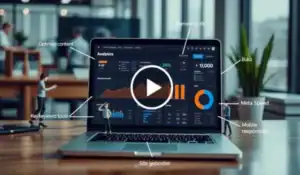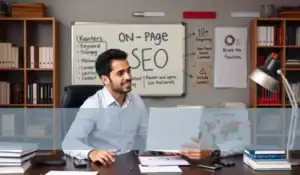Latest on-page SEO techniques driving results in 2025, search engine algorithms have changed over time, but on-page SEO is still super important. In this post, you’ll learn modern on-page SEO techniques that work today. These are the same methods we use to help our pages rank higher and stay future-proof. Let’s dive in.
On-Page SEO (also known as on-site SEO) refers to the practice of optimizing individual web pages so they rank higher and earn more relevant traffic from search engines like Google, Bing, or Yahoo. It involves both the content and HTML source code of a page — everything that happens on your website, unlike off-page SEO, which involves backlinks and other external signals. In simple terms, on-page SEO helps search engines understand what your page is about and how useful it is for users.
Optimize Internal Linking
Internal links connect different pages on your website. These links help:
- Search engines discover and index your content
- Users navigate your site easily
- Google understands how your content is related
Best Practices:
Link to relevant pages only
Use descriptive anchor text like:
- “SEO tips for beginners” instead of just “click here”
- Avoid repeating the same anchor text on different links
Tip: A smart internal linking strategy boosts your authority on specific topics.
Use Heading Tags Correctly (H1 to H6) On-Page
Headings help organize your content, both for users and search engines. Think of them like an outline:
- H1 = Main topic (only once per page)
- H2 = Main sections
- H3–H6 = Subsections under each section
Best Practices:
- Don’t skip levels (don’t jump from H2 to H4)
- Keep your structure clean and logical
Use tools like the Outline feature in WordPress or Rank Math’s Content AI to review your headings.
Tip: Clean heading structure improves readability and SEO.
Use a Clean, Keyword-Based URL Structure
Your URL tells Google and users what your page is about. A short, clear URL with keywords is best.
Good Example:
yourwebsite.com/seo-tips/
Bad Example:
yourwebsite.com/2025/04/01/article-234/
Important:
Don’t change the URLs of existing pages that are already ranking.
For new pages, always use short, descriptive URLs.
Tip: A well-structured URL looks better and performs better in search results.
Write Better Meta Titles & Descriptions
These are what people see on Google search results — so they must be clear, relevant, and click-worthy.
Meta Title Tips:
- Include your main keyword
- Keep it under 60 characters
- Make it catchy but relevant
Meta Description Tips:
- Summarize your page in 1–2 sentences
- Include your keyword naturally
- Stay under 160 characters or 920 pixels
Pro Tip: Use Rank Math’s AI tools to generate optimized titles and descriptions if you’re not sure what to write.
Smart Keyword Placement
Even though search engines are smarter now, keywords still matter when used strategically.
Use Your Main Keyword In:
- The URL
- The meta title
- The meta description
- The first 10% of your content
- At least one heading (H2 or H3)
- One image alt tag
Don’t keyword stuff! Write naturally and focus on user experience.
Add Descriptive Alt Text to Images
Alt text helps both Google and visually impaired users understand what your image is about.
Best Practices:
- Describe what’s in the image
- Include your main keyword (if it fits naturally)
- Use alt text for all important images, especially the first one
Tip: Alt text is easy to forget but powerful for SEO and accessibility.
Conclusion
Great on-page SEO is not about tricks, it’s about making your site clear, organized, and user-friendly.
Here’s a quick recap:
- Use smart internal links and On-Page
- Organize content with heading tags
- Keep URLs short and keyword-rich
- Craft strong meta titles & descriptions
- Place keywords where they matter
- Use alt text for your images
Want help with SEO? Tools like Rank Math and Content AI make it easier than ever to follow these steps and grow your traffic.






